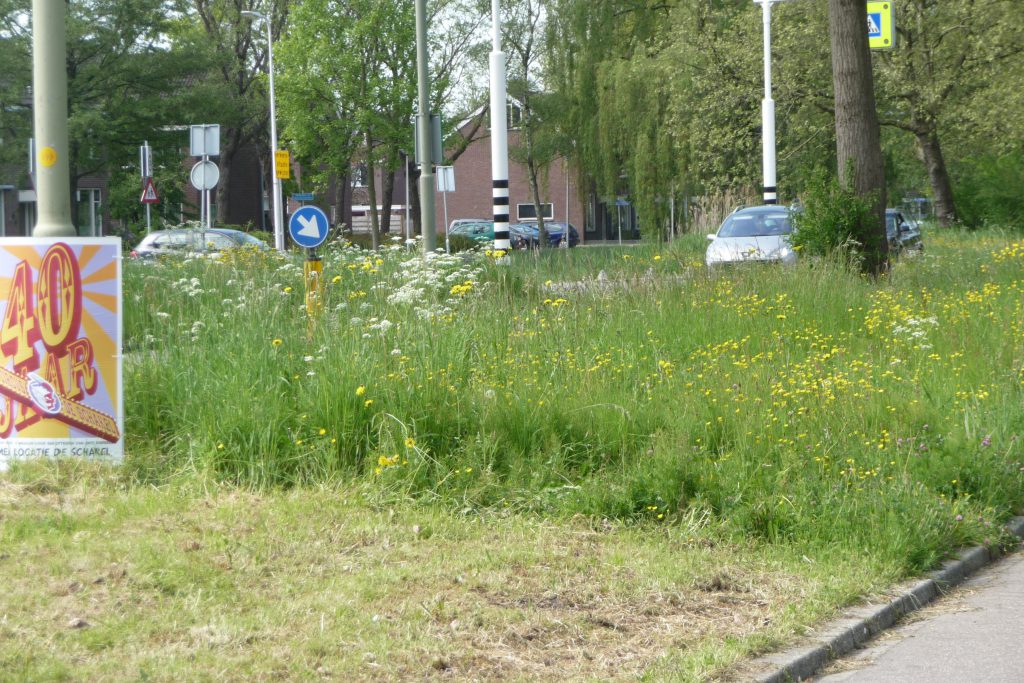
An experiment was set up in Rotterdam to find the optimal mowing method for the municipality to enhance biodiversity. Urban ecologists have called this ‘mosaic mowing’. This type of mowing is used for broader roadside verges with nutrient-rich soil. With mosaic mowing, there are three rounds of mowing, whereby one part is done in the first round and another part in the next. The vegetation is never completely mowed in one go and one part is always left untouched during the winter. This is especially beneficial for insects, which use the vegetation throughout the year in all their life stages (egg, larva, pupa and imago). By removing the cuttings, the soil is prevented from becoming too rich in nutrients. The first round is scheduled early in the year (in May), so the herbs in one third of the area have the chance to bloom at the end of the summer. Verges at crossings and the first 50 centimetres along the roads are always kept short for safety reasons. Already within a year, measurements indicated that biodiversity was significantly higher than in similar parts with traditional management. Many grasses and herbs completed their entire flowering cycle, thus increasing the wealth of insects, especially butterflies. Not only the species that live in these grass strips benefit from this mosaic mowing, but perhaps these strips also serve as a refugium for the more picky species from the surrounding areas. In 2017, the survey will be extended with an inventory of bees.
-Rotterdam (NL) 2016
-Remko Andeweg, Bureau Stadsnatuur